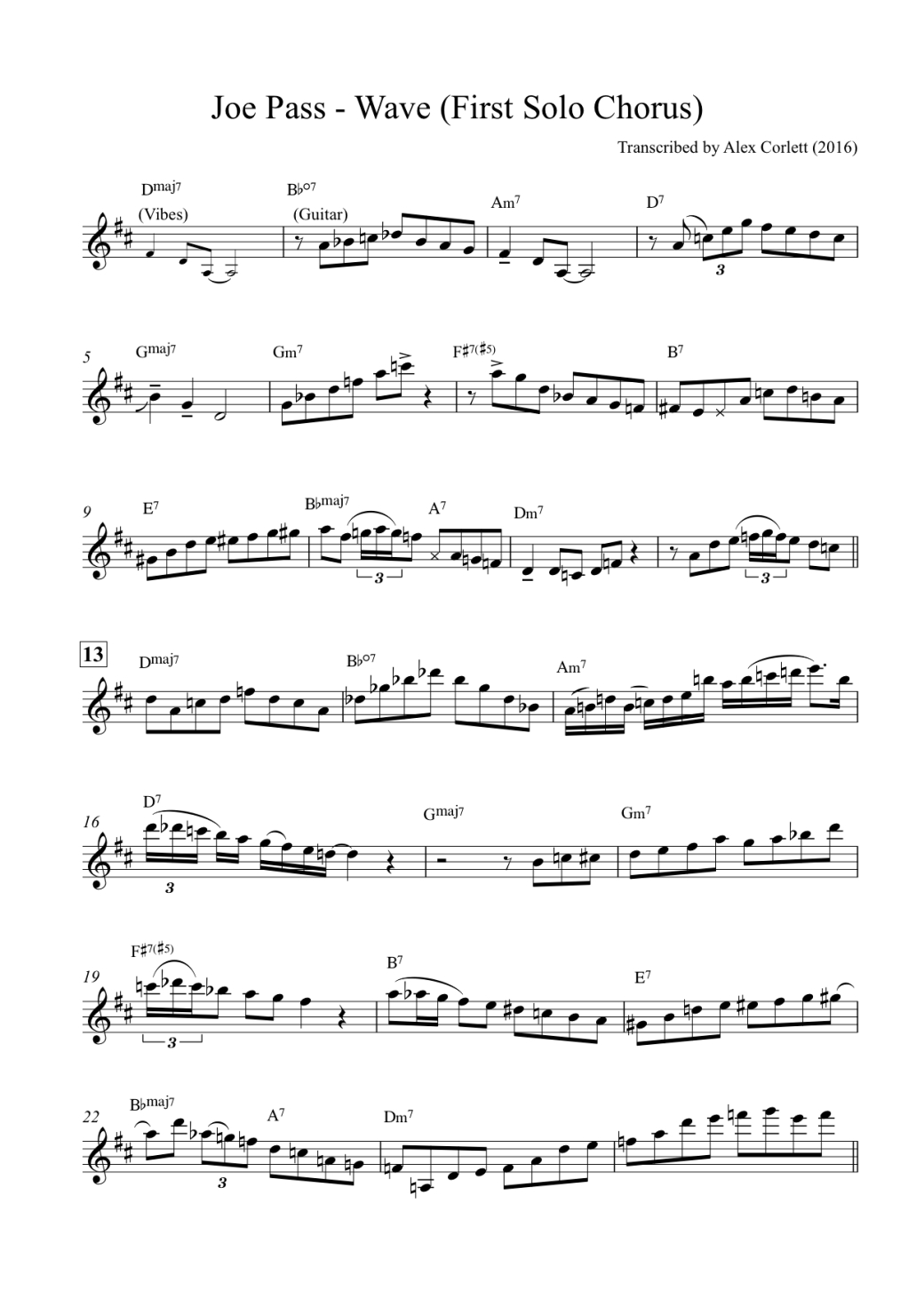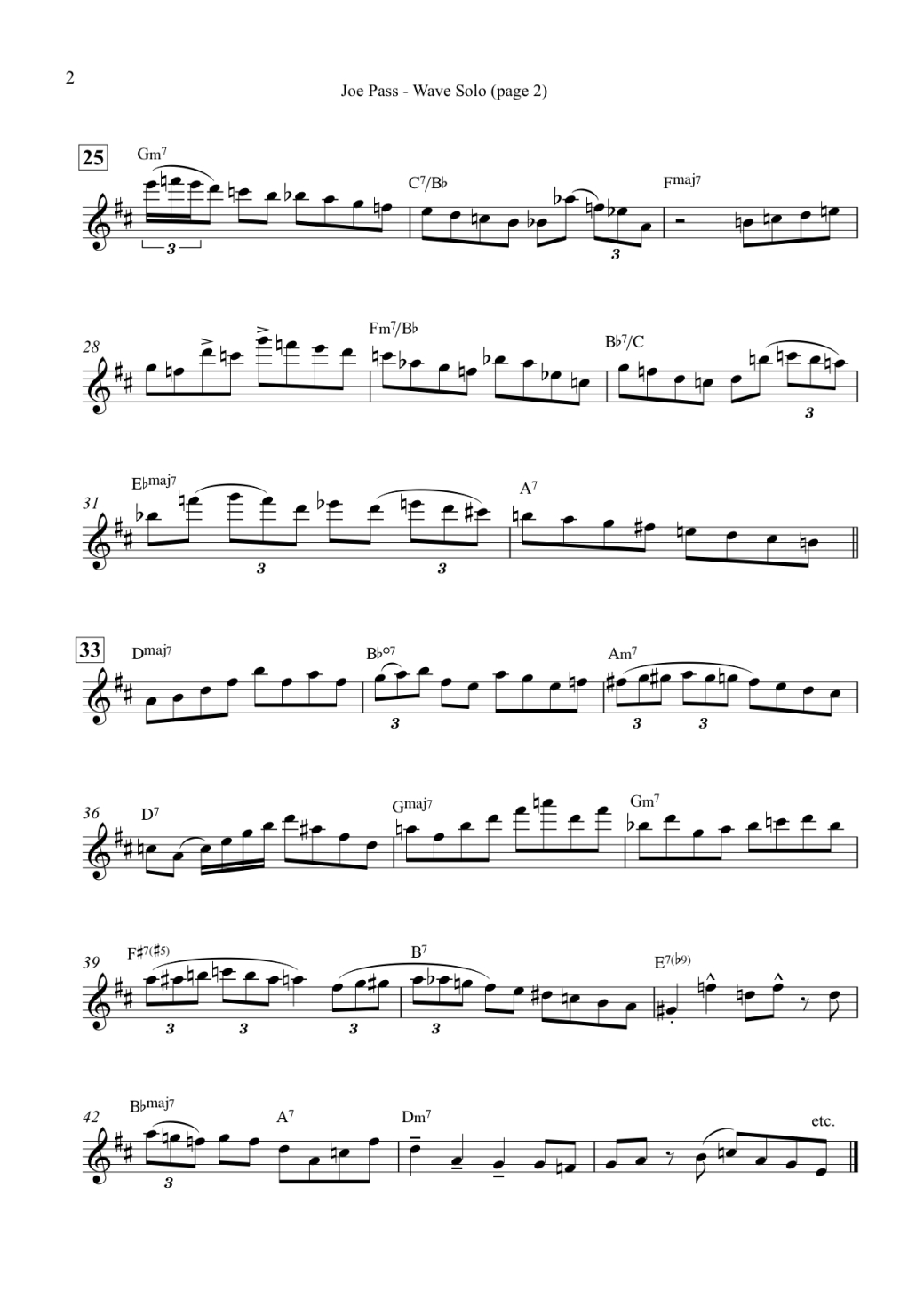Joe Pass (1929 -1994) achieved worldwide recognition thanks to his ability to perform jazz concerts entirely unaccompanied. His prodigious technique allowed him to allude to bass-lines and harmony whilst simultaneously creating intricate improvised solos. The spontaneity of his approach was especially striking. His solo guitar performances eschewed preconceived ideas, relying not on carefully considered arrangements, instead giving free rein to Pass’s off-the-cuff inventive spirit. He was able to maintain a constant level of creativity and momentum whilst miraculously maintaining something of a musical juggling act.

When Pass came to the attention of the jazz press he was already middle-aged, having lost the best part of a decade to heroin addiction. From the 1960s right up until the end of his life he made up for lost time by recording prolifically in a wide variety of contexts. He played in the Oscar Peterson Trio, recorded duets with Ella Fitzgerald and fellow guitarist Herb Ellis, led many sessions in his own name and was featured as a sideman with Zoot Sims, Andre Previn and many others.
(If any of the information on this page is of use and you would like to make a donation, please use the button below).
The transcription below is taken from a recording Pass made with vibes player Milt Jackson and bassist Ray Brown. The album is called The Big 3 and features several standards, including the well-known Jobim classic Wave. The tune of this familiar bossa is forty-four bars long, consisting of a repeated twelve-bar ‘A’ section, an eight-bar bridge, and a repeat of the twelve-bar section. A couple of bars into his solo Pass copies the closing statement of Milt Jackson’s solo.

Joe Pass – Wave (solo transcription page 1)

Joe Pass – Wave (solo transcription page 2)
One possible criticism of the solo is that much of it seems a little hurried, never pausing for breath. It does, however, contain an abundance of good bebop-inflected lines such as those in bars 7-10 and 25-26. Also of interest is the way Pass chooses to allow his D minor phrase at the end of the first 12-bar section to stubbornly continue into bar 13. In the following bar he superimposes a Gb major arpeggio instead of outlining the expected Bb diminished seventh chord. Elsewhere he is extremely careful to spell-out the changes. This is readily apparent in the way in which he cleverly outlines the change from minor to major in bars 37-38, whilst preserving the sequential pattern he has at that point established. Joe Pass’s nimble little-finger allows him to slur four notes at a time, a technique he eagerly exploits in bars 39-40.
